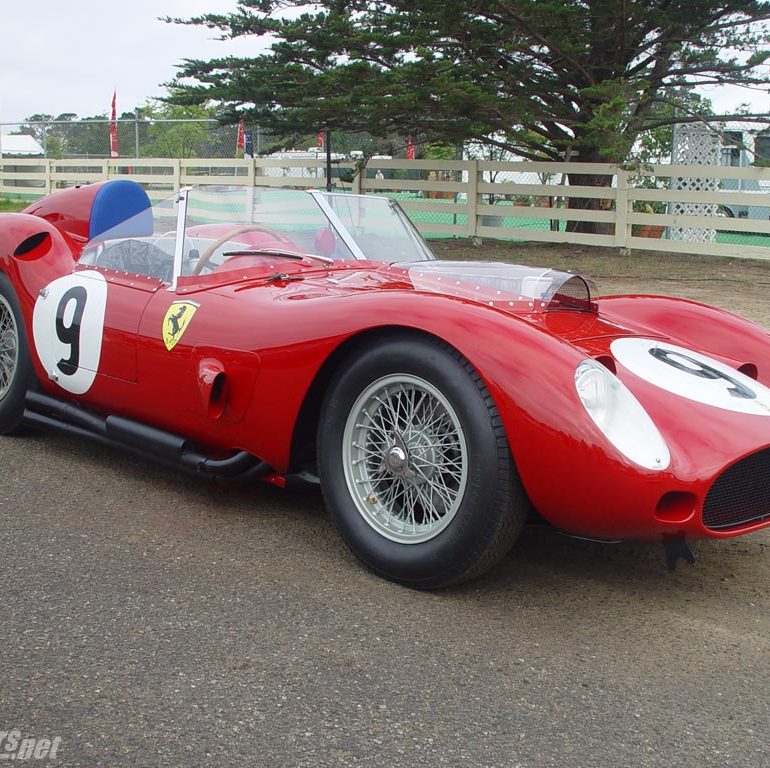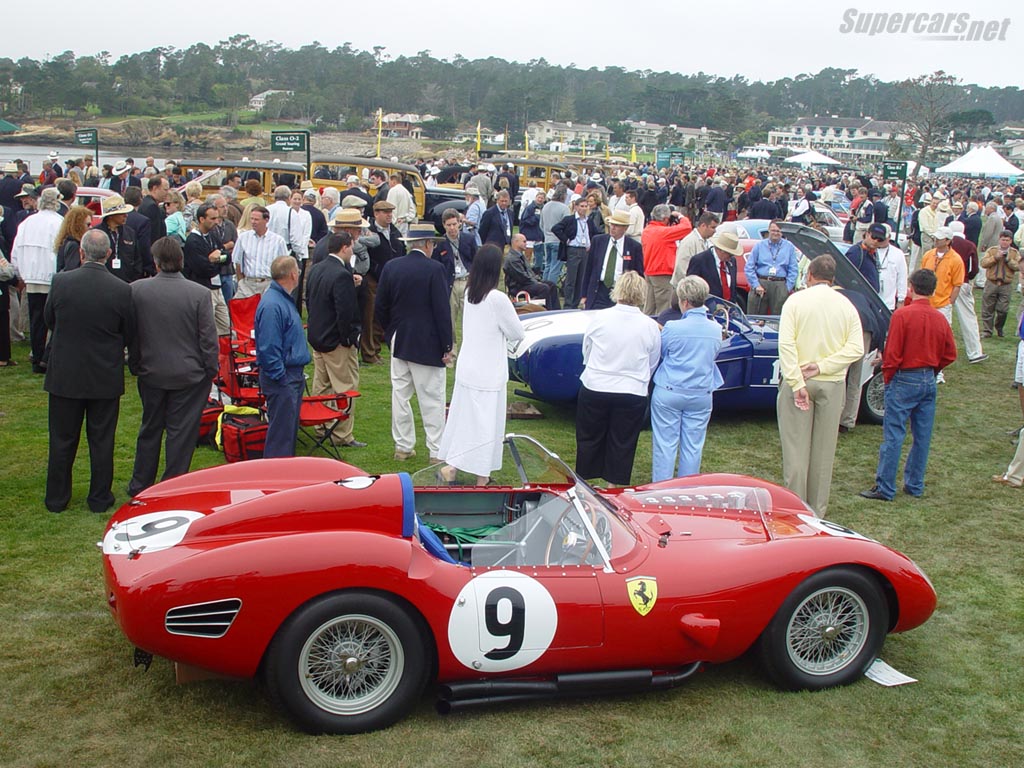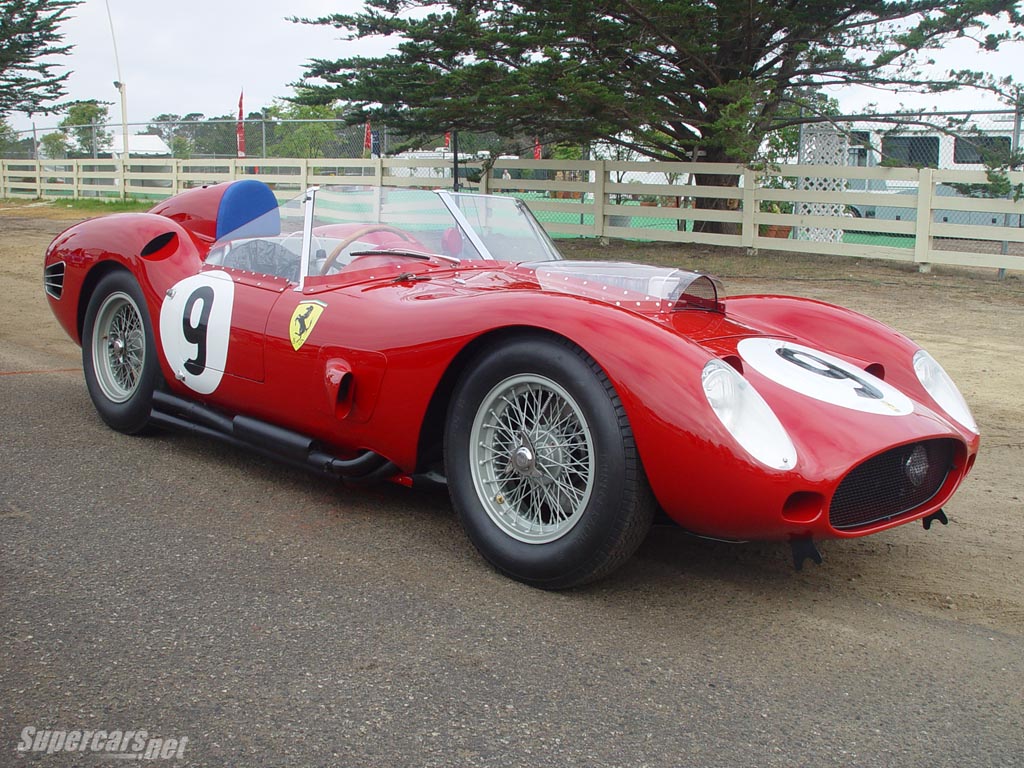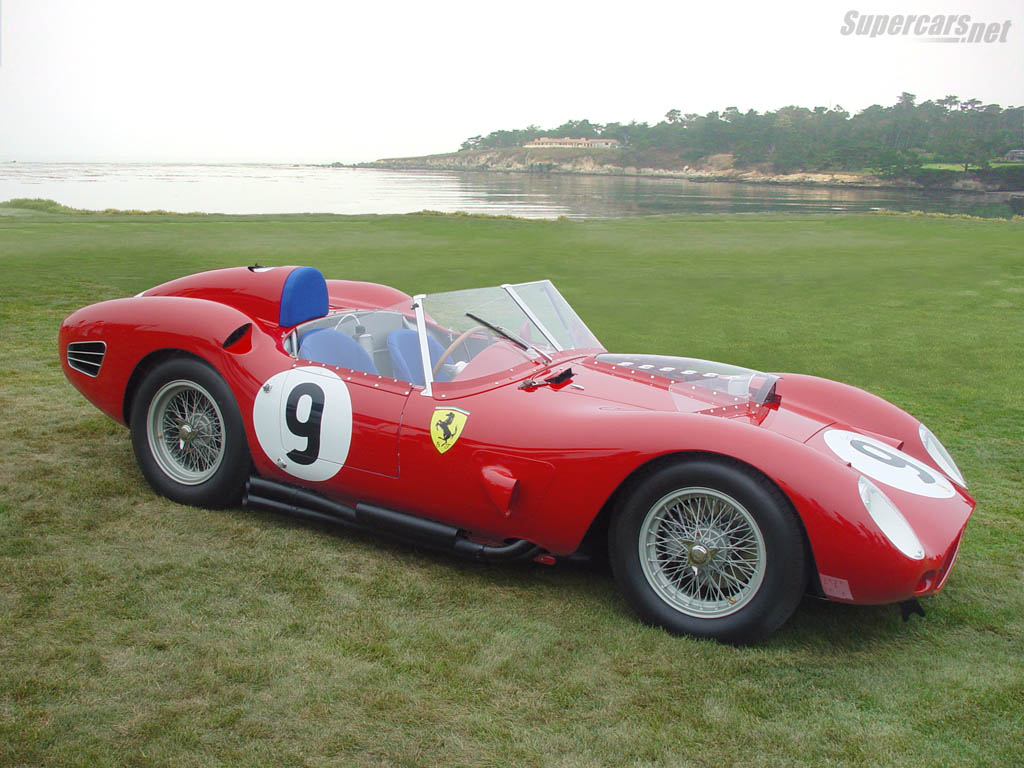1960 Ferrari 250 TR59/60
After narrowly losing the 1959 World Sports Championship to Aston Martin, things had to change and Ferrari updated the TR59 into the TR59/60. At the factory’s disposal were several specially developed Testa Rossas, known as the TR59, which were updated for 1960. Despite having multiple cars in development like the rear-engine Dino, Ferrari engineers, led by Carlo Chiti, devoted what little time they had to improve the Testa Rossa for the 1960 season. The evolution of earlier cars was the largest influence on the cars overall shape but, in detail, the new TR59/60 was different.
New regulations made by the CSI attempted to make the prototype sports cars appear more like grand touring cars. To follow new guidelines, the Testa Rossa needed a tighter turning radius, a larger windscreen, windshield wipers and a trunk space. These obvious changes that distinguished the TR59/60 from the TR59.
Three of the old TR59s were converted to the new specification and featured the larger windscreens and side mounted exhaust. These were followed later in the season with two special TRI60 cars which received the independent suspension from the Dino 246 Formula One car.
Under the skin, Ferrari was trying new transmissions to replace the five-speed Colleti gearbox. Initially, the cars ran with four speed units which allowed the engine and transmission unit to sit lower and further back in the car.
On the Track
The absence of Aston Martin with their formidable DBR1 was sigh of relief to the last two factory teams in the 1960 championship, Porsche and Ferrari. Unexpected to both was the arrival of Maserati through the American Camoradi team. They hired a host of talent, including Dan Gurney and Stirling Moss, to drive the Tipo 61 Birdcage and contest most championship rounds.
The first round was good for the Testa Rossas, with Phil Hill and Cliff Alison winning the Buenos Aires 1000k. Due to a fuel disagreement, no factory Testa Rossas contested the next round in Sebring at the request of Enzo himself. However, as private entrants, Jack Nethercutt and Pete Lovely scored four points by placing third in a TR59. Jack and Pete’s points were crucial for the 1960 championship.
Chiti, Hard at Work
Before Le Mans, it was apparent that engineer Carlo Chiti, had been very busy. What Chiti had done was adapt the rear independent suspension from the Dino 246 Formula One car. Two new cars, called TRI60s were made that looked outwardly identical to the TR59/60. Also included was a new 5-speed transmission, vented disc brakes and a slight weight reduction. The new car was called the TRI60 and looked outwardly identical to the TR59/60.
The fact that Chiti had any time for the TRI60 was remarkable. He had been working on the rear-engine 246SP powered by the Dino V6 engine. As factory cars, 246SPs raced alongside the Testa Rossas at Buenos Aires and would be a decisive factor at the upcoming Targa Florio.
Back to the track
The Targa Florio was a turning point for Ferrari engineering. For the first time, Ferrari entered more rear engine sports prototypes than front engine Testa Rossas. The Testa Rossas were outnumbered by 246SPs which featured lightweight Dino V6 engines. The smaller and lighter 246SP was thought to negotiate the tight, 700-turn Targa better than the heavy Testa Rossas.
During the race, both Testa Rossas dropped out, leaving the V6 cars to take what points they could away from Porsche. In the end Wolfgang von Trips and Phil Hill finished second, with the other two Dinos finishing 4th and 7th. These three finishes were remarkable as this was the second race in which the 246 had competed.
Nurburgring was disappointing, as only one works Ferrari finished, and that was behind the winning Maserati. Much to everyone’s surprise, the Maserati Tipo 61 took the victory driven by Stirling Moss and Dan Gurney. This victory at the 1960 Nurburgring race, still highlights the Tipo 61’s career.
Like the 1959 season, the last race would decide the Championship, and since Goodwood had dropped out of the schedule, this meant Le Mans would be the final showdown.
For Ferrari, Le Mans had to be the saving grace. At the event were several customer Testa Rossas, TR58s, TR59s and the new TRI60s. Power in numbers was the strategy and the two works car that didn’t retire, won the race in a 1-2 fashion. The 1960 Championship was Ferrari’s.
American racing didn’t provide a single highlight for the Testa Rossas. Most victories went to the Maserati Birdcage and Lotus 19, leaving, at best, second place for the Ferraris.
When looking at the 1960 season, it is obvious the Testa Rossa was more successful at the highspeed endurance races compared to the ‘sprint car’ runs in the States. And, since the Testa Rossa was getting replaced by the smaller 246SP in the tighter courses, the season also showed the car was less flexible to compete outside of Le Mans, Sebring and Nassau. Despite these limitations, the Testa Rossa was still a great success beyond 1960.
Ferrari 250 TR59/60 Photos & Image Gallery
See full 1960 Ferrari 250 TR59/60 Gallery here
0770TR
Our feature car, 0770TR is one of two works Testa Rossas in the TR59/60 bodystyle. This particular car is distinguished by its four side pipes. 770TR raced Le Mans in 1960 with race number 9. It did not finish the race and was later configured for taller drivers such as Dan Gurney. Eventually the car made its way over the states and was fitted at one point with a V8 for SCCA racing.
After being found, it was purchased by John Mozart and restored by Paul Russel back into its 1960 Le Mans configuration. It debuted at the 2002 Pebble Beach Concours.
250 TR59/60 Specs & Performance
| type | Racing Car |
| engine | Aluminum, 60 Degree, Tipo 128LM V12 |
| position | Front Longitudinal |
| aspiration | Natural |
| valvetrain | Chain Driven SOHC, 2 Valves per Cyl |
| fuel feed | 6 Twin-Throat 38 DCN Weber Carburettors |
| displacement | 2953 cc / 180.2 in³ |
| bore | 73 mm / 2.87 in |
| stroke | 58.8 mm / 2.31 in |
| compression | 9.8:1 |
| power | 223.7 kw / 306 bhp @ 7400 rpm |
| specific output | 103.62 bhp per litre |
| bhp/weight | 407.46 bhp per tonne |
| torque | 380.98 nm / 281 ft lbs @ 5500 rpm |
| redline | 8800 |
| body / frame | Aluminum over Tipo 526D Steel Tube Frame |
| driven wheels | RWD w/Limited-Slip Differential |
| front tires | 5.5×16 Dunlop |
| rear tires | 6.5×16 Dunlop |
| front brakes | Dunlop Discs |
| rear brakes | Dunlop Discs |
| front wheels | F 40.6 x 14.0 cm / 16 x 5.5 in |
| rear wheels | R 40.6 x 15.2 cm / 16 x 6 in |
| steering | ZF Steering Box |
| f suspension | Unequal A-Arms w/Coil Springs over Shock Absorbers, Anti-Roll Bar |
| r suspension | De Dion Type w/Coil Springs over Shock Absorbers, Anti-Roll Bar |
| curb weight | 751 kg / 1655 lbs |
| wheelbase | 2350 mm / 92.5 in |
| front track | 1308 mm / 51.5 in |
| rear track | 1300 mm / 51.2 in |
| length | 3959 mm / 155.9 in |
| width | 1523 mm / 60.0 in |
| transmission | 4-Speed Tranaxle |
Sources & Further Reading
Finn, Joel E. Testa Rossa V12, Newport Press: 1979.
Mallepelle, Paolo. ‘The Ferrari Sports Racer.’ Cavallino 42, Dec 1987.
Mangiamele, Guy. ‘250 Testa Rossa’. Cavallino 67, Feb 1992.
Pomeroy, Larence. ‘Succeeding a Champion.’ Motor, Apr 1958.
Prunet, Antione. Ferrari Sports Racing and Prototype Competition Cars, Haynes: 1983.







